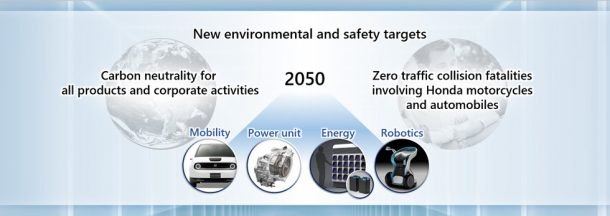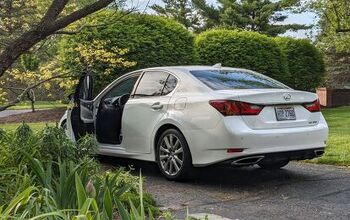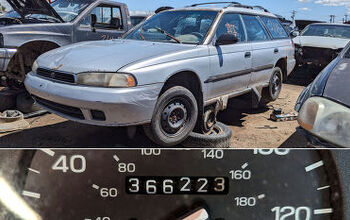Honda Solidifies Its Existing Businesses
Honda Motor Company President Toshihiro Mibe’s first press conference, held April 23rd, was where he committed to solidifying Honda’s existing businesses.
Honda is working to achieve carbon neutrality for all products and activities by 2050. Zero environmental impact not only for its products but their entire lifecycle. Areas of concentration include carbon neutrality, clean energy, and resource circulation.
Honda’s power pack swappable batteries will expand electrified cars’ and motorcycles’ range. Infrastructure-linked smart power operations encourage renewable energy use.
Mibe said Honda will be hydrogen-proactive, among a variety of energy sources. Carbon-neutral fuels are part of an energy multi-pathway.
Honda continues the eMaaS concept, where the company supports mobility freedom and renewable energy use expansion. This includes the use of mobile power packs, large-capacity batteries in EVs, and fuel cell systems growth.
Honda’s battery-electric vehicle (EVs) and fuel cell electric vehicle (FCVs) ratio in all major EV markets will be 40 percent by 2030, 80 percent by 2035, and 100 percent by 2040. Meeting these targets will require the entire chain’s participation. Honda set high goals to clarify what they want to accomplish. Honda employees worldwide accept the challenge of trying to reach these goals.
The North American target EV/FCV sales ratio is 40 percent by 2030, 80 percent by 2035, and 100 percent by 2040. Leveraging the General Motors alliance, Honda will pursue electrification by taking advantage of the strengths of both companies. Honda and GM are developing two large-sized EV models using GM’s Ultium batteries. They are planning to introduce these vehicles as 2024 models, one from Honda and the other from Acura.
Honda will launch a series of new EV models using e:Architecture, a new EV platform led by Honda. These EV models will be introduced in North America, and then in other parts of the world.
In China, Honda’s EV/FCV unit sales targets are identical to that of North America. Honda has introduced EV models using local resources, and will further accelerate this approach going forward. Strengthening their collaboration with CATL for batteries is one example. 10 Honda-brand EV models will be introduced in five years. The first of these models based on the Honda SUV e:prototype, will go on sale in spring 2022.
In Japan, Honda’s EV/FCV unit sales target starts out at a modest 20 percent by 2030, then catches up with the rest of the world in 2035. They expect 100 percent of their automobile unit sales in Japan by 2030 to be electric. The first to debut K-car segment EV in 2024, Honda is progressing in the electrification of both hybrid and EV K-cars.
A local production and local procurement approach to sourcing batteries in Japan, this will also contribute to growth domestically. Addressing mobility services (MaaS), Honda is working on the Cruise Origin, an electric self-driving vehicle they are developing with GM.
Maintaining EV competitiveness has meant all-solid-state battery research as the next-gen high-capacity, low-cost power source. Production technology verification will start this year. Honda is accelerating this research to make all-solid-state batteries available in the second half of the 2020s.
Honda’s motorcycle industry leadership includes not only electrification but also improving gasoline engine fuel efficiency, biofuel utilization, and other strategies. Electrification of motorcycles required consideration of batteries separately from the motorcycle. In developed countries, Honda will pursue electrification utilizing their mobile power packs, targeting B-to-B (business-to-business) and B-to-G (business-to-government) customers.
For personal use, Honda is enhancing their product lineup. They will make battery-swapping stations available, and ensure user convenience by making them swappable with other makes. Honda has established a consortium with other Japanese and European motorcycle OEMs to develop technology standards for swappable batteries. Expanding mobile power pack applications beyond motorcycles to power products and micro-mobility products is another of Honda’s goals.
Introducing GYRO e: and GYRO CANOPY e: business-use bikes this year, Honda will also have three new personal use EVs with engine sizes below 50cc and below 125cc by 2024.
Hydrogen is expected to be a popular renewable energy source. While continuing to collaborate with GM, Honda wants to reduce costs and start a hydrogen base by FCV lineup expansion. They also want to use FC systems for a wide range of applications, including commercial trucks, stationary, and movable power sources.
Striving for zero traffic collision fatalities involving Honda products globally by 2050, the major challenge is how to eliminate motorcycle collision fatalities, especially in emerging countries. Strengthening research on safety technologies that enable motorcycles and automobiles to safely coexist will lead the way towards a collision-free society.
Motorcycle collision fatalities often involve automobiles. Honda’s application of its omnidirectional ADAS (advanced driver-assistance system) to all new automobiles they introduce in developed countries by 2030 will help reduce that number. Using their Level 3 automated driving technologies, it will further enhance ADAS intelligence, which increases the percentage of collision patterns covered.
Regardless of sales revenue fluctuations, Honda will invest a total of $5 trillion Yen ($45,999,250,000 U.S.) in research and development over the next six years. The company will take the necessary measures, including alliances, to further develop digital technologies as quickly as possible. They will also be proactive in building a strong electrification value chain.
Ambitious? Not for a motorcycle company that came ashore in the U.S. in 1959.
[Images: Honda]
With a father who owned a dealership, I literally grew up in the business. After college, I worked for GM, Nissan and Mazda, writing articles for automotive enthusiast magazines as a side gig. I discovered you could make a living selling ad space at Four Wheeler magazine, before I moved on to selling TV for the National Hot Rod Association. After that, I started Roadhouse, a marketing, advertising and PR firm dedicated to the automotive, outdoor/apparel, and entertainment industries. Through the years, I continued writing, shooting, and editing. It keep things interesting.
More by Jason R. Sakurai
Latest Car Reviews
Read moreLatest Product Reviews
Read moreRecent Comments
- Golden2husky This was a common topic at work - kids learned how to drive, and now another car is needed. I was amazed at all the excuses made about how their kid must have a new car. Used cars are a "risk" for breakdown, they are not as safe, etc...which is all BS of course. How much difference in safety is there between a new car and the same model that is five years old? Maintained cars don't break down very often. I've driven cars for far, far longer than most and have been towed exactly twice in my entire driving career (about 800,000 miles). While I wouldn't put my daughter into a 15 year old car and let her drive across the country, I would be fine with a 5 year old car that was well cared for. Let's be realistic - new drivers are likely to get into a fender bender - why do that to a new car. I was thrilled to get an 8 year old car for college back in the day even though my folks could afford to buy all of us new cars if they wanted to. If you Want to buy your kid new, go ahead. Just don't freak out when they come home with a fresh dent.
- CanadaCraig Can you eventually go to prison for driving without a licence in the US?
- CanadaCraig To hell with the UAW.
- CanadaCraig First I'll answer the question. YES. Toyota, Mazda and Subaru are doing the right thing. That said... If only those pushing for an all EV world would care as much about the 1 BILLION earthlings that make less than $1 a day.
- Redapple2 All this BEV investment. A bigger impact (less oil consumption) would have been made if we had made PIG UP trucks smaller since 2000 and not HUGEr. (And raised gas tax by $2-3/gallon.)









































Comments
Join the conversation
Quote- Striving for zero traffic collision fatalities involving Honda products globally by 2050. They can strive and dance and talk all they want but this is an impossibility with so many factors at work- road irregularities, cost cutting, software and sensor glitches, weather etc to name a few. Instead they should be aiming at a reduction which is far more realistic.
"Ambitious? Not for a motorcycle company that came ashore in the U.S. in 1959." Yes it is - it's ambitious PR drivel. For starters, swappable batteries is a failed idea. FCVs are energy upside down, and hydrogen is going nowhere unless some brave company gives a Tesla-like effort to make it viable, including the mfr and distribution of the fuel. And even Tesla doesn't have to produce and distribute the power for their Superchargers.